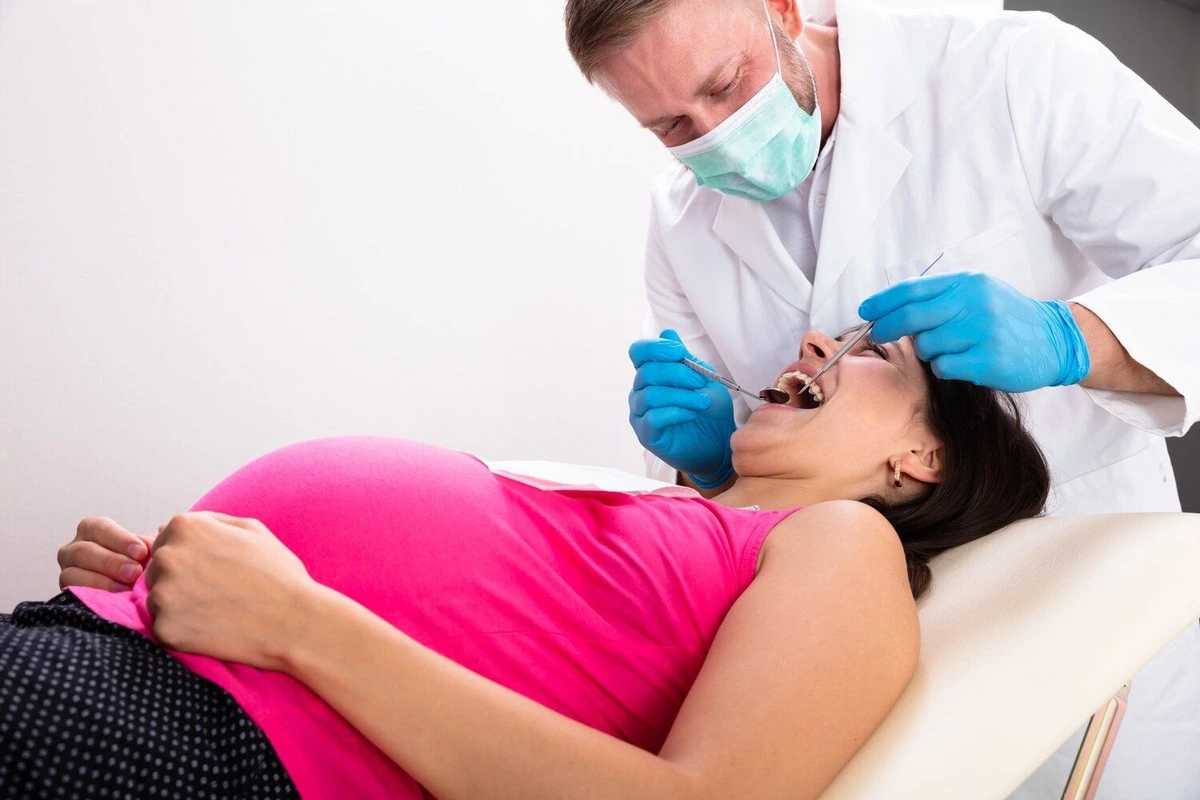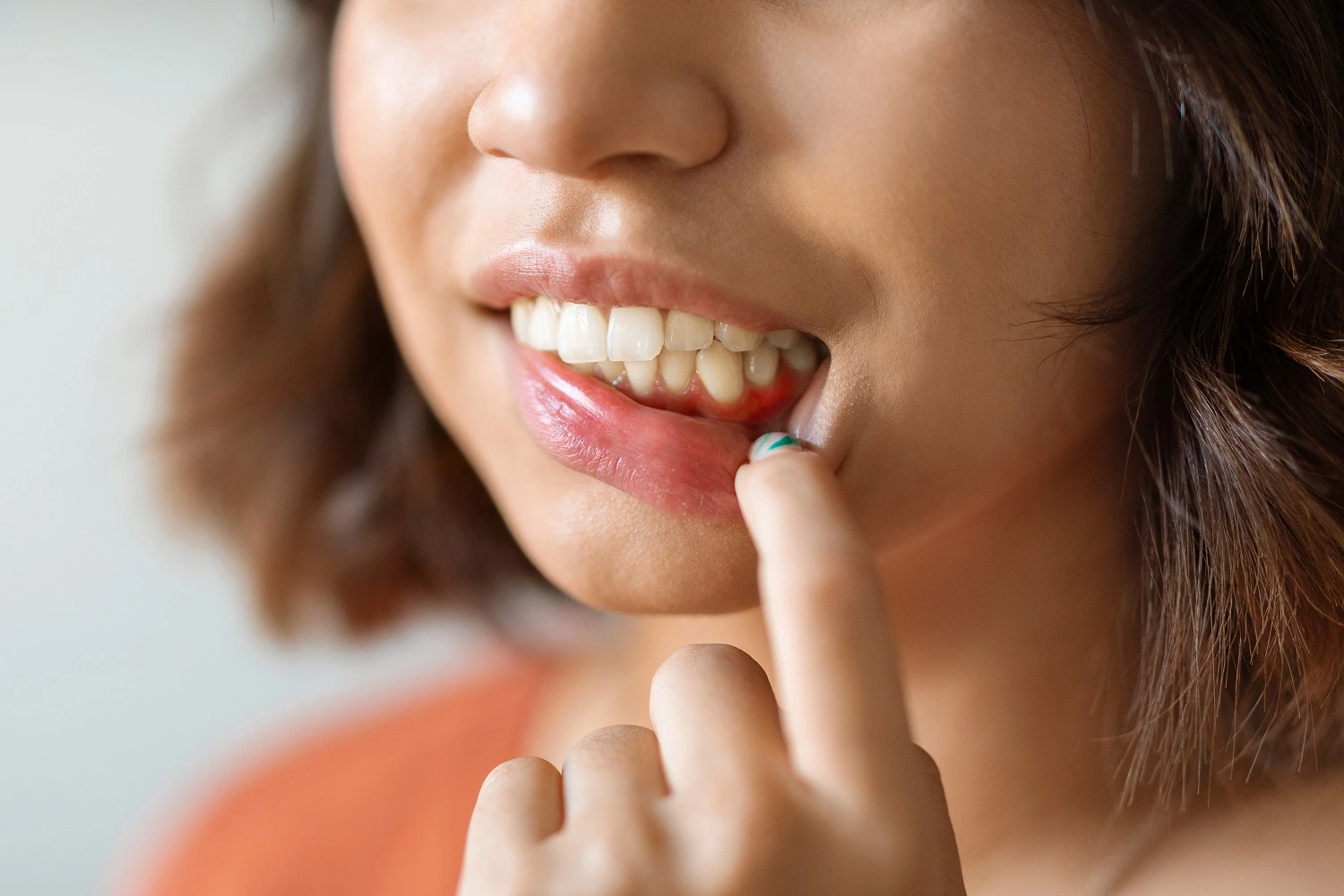Last Updated on: 5th December 2024, 09:17 am
Sensitive teeth during pregnancy
Dental hypersensitivity in pregnancy is more common than people think. When the tooth is located in its ideal anatomical position, the gingival margin is arranged slightly coronally to the amelocemental junction, and only the enamel surface is in contact with the oral environment. When the cementum and dentin are exposed as a result of gingival recession, external tactile, thermal, or chemical stimuli can trigger a painful sensation known as dentin hypersensitivity. In addition to gingival recession, other factors can cause sensitivity while, in turn, gingival recession is produced by vigorous brushing, dental malposition, and orthodontic treatments, among others.

It is a painful syndrome of a chronic nature with acute exacerbations characterized by a painful response to stimuli that would not cause discomfort under normal conditions. Addy et al define dentinal hyperesthesia as a transitory pain derived from dentin exposure that appears in relation to a chemical, osmotic, thermal or tactile stimulus and that cannot be associated with any other type of dental pathology. Epidemiological studies report that dental hypersensitivity affects one in seven people.
Causes of dental sensitivity in pregnancy
Sensitivity is caused by open dentin tubules that connect the pulp to the oral cavity; the degree of sensitivity is influenced by the number and size of these open tubules.
Its origin is multifactorial, causing some treatment to be unsatisfactory despite the use of multiple methods. A strong dentinal response manifests as pain, which can be acute, throbbing, and burning. It originates from a noxious stimulus that activates specific nerves, transmitting the sensation to the central nervous system, where it is interpreted as pain.

Dental hypersensitivity is more frequent in vestibular areas; and the most affected teeth are the canines and bicuspids. Severe cases of sensitivity can motivate an emotional change and alter the lifestyle of those afflicted.
The most frequent causes of hypersensitivity are dentinal surfaces exposed by erosion, abrasion or gingival recessions, occlusal trauma, a lack of amelocemental union leaving the dentin exposed, repetitive root planing, cervical caries, periodontal surgical treatments, enamel hypoplasias and external stimuli such as cold, heat, acids, pressure, chemicals as well as high osmotic solutions that can cause fluid movement in the dentinal tubules and induce pain in the pulp nerves.
Factors that trigger dental hypersensitivity in pregnancy
Gingival conditions often appear such as sensitive teeth during pregnancy; they are mainly related hormonal factors. They can be accompanied by discomforts such as dental hypersensitivity, since at this stage, a proliferation of bacteria in the mouth is favored, with acidic pHs that generate hypersensitivity. Of note, dental hypersensitivity can appear at any stage of life.
During pregnancy, women are subjected to both extrinsic and intrinsic measures that may be related, making them vulnerable to dental hypersensitivity. Changes in salivary production, oral flora, and diet, among others, are capable of producing it.

Studies have shown that unlike the skeletal system, in this state there is no demineralization of the teeth. Enamel has a very slow mineral exchange, so it retains its mineral content for life. Much of what happens in enamel takes place due to the exchange of minerals with those of saliva and not to a decrease in calcium. It is suggested that calcium not be extracted from dental tissue, despite the fact that the requirements for it are increased by 33% as compared to non-pregnant women.
During pregnancy, the secretion of hormones such as estrogen increases 30 times more than normal and progesterone 10 times, as compared to what occurs in the normal cycle. This hormonal influence acts as an intense inflammatory response with an increase in vascular permeability and exudation, which causes a microcirculation that favors the filtration of fluids in perivascular tissues.
Having sensitive teeth during pregnancy is not uncommon. Other factors that can trigger dental hypersensitivity are:
- Enamel that wears out over time from very strong brushing or frequently consuming acidic food and drink.
- Gum recession caused by disease or the rough brushing of teeth. Periodontal surgery can remove part of the gum.
- Increased blood flow causes teeth to become sensitive. The mouth will become more sensitive to touch. Plus, hormones can affect the way the mouth reacts to bacteria, causing sore teeth.
Treatment for sensitive teeth during pregnancy
In order to successfully treat this pathology, it is necessary for the professional to make a correct diagnosis by collecting information from the patient to identify the factors that trigger it such as: cold, heat, acids, and sweets, among others. There is a classification of dental hypersensitivity that is useful to determine the type of treatment to implement:
- Grade 1- No pain during food consumption
- Grade 2 – Rare pain that interferes with food consumption·
- Grade 3 – Pain appears regularly and interferes with food consumption
- Grade 4 – pain always appears with food consumption.
As an example: the patient who has pain even when he breathes is grade 4. Pain sometimes with cold water or when brushing the teeth is grade 3. If ice cream gives the patient pain, it is grade 2. Here are some general fixes that will greatly help for your sensitive teeth during pregnancy:
- Daily rinse with lukewarm water plus salt
- Brush your teeth at least 2 times a day
- Lessen the consumption of junk foods
- Avoiding eating foods with high amounts of sugar
- Floss your teeth
- Stop using alcohol-based mouthwash for a while
Conclusion
- Clinicians must take into account the causal factors that play an important role in the initiation and localization of dental hypersensitivity.
- It is essential to identify these factors so that preventive regimens may be included in the treatment plan.
- Active management of dental hypersensitivity often involves a combination of home care with therapies in the dental office.
- In practice, the treatment established will depend on the perceived severity of the condition and the number of teeth involved.
- In all cases, periodic visits are recommended to evaluate the evolution of dental hypersensitivity and take pertinent measures as the case may indicate.
Contact us
If you have any questions about this or other topics, contact us at Channel Island Family Dental, as well as on our Facebook page. At Channel Island Family Dental, we are always attentive to your needs to make a timely diagnosis. In addition, our dentists in Oxnard, Santa Paula, Newbury Park Ventura, and Port Hueneme will guide you to the best treatment to give you back your best smile.















